
views
- Power pumping mimics cluster feeding (when your baby feeds with few breaks in between) and helps to increase milk production and supply.
- To power pump, pump for 20 minutes, rest 10, pump 10, rest 10, and pump 10 over 60 minutes.
- Power pump once daily for 60 minutes, in place of 1 regular pumping session.
- You can use whatever pumping device you prefer whenever it’s convenient, though it’s easier to do after feeding your baby.
What is power pumping?
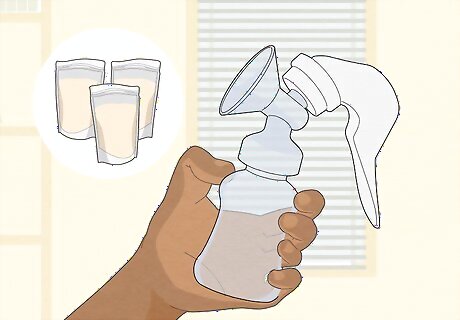
Power pumping mimics cluster feeding and increases milk supply. Also known as cluster pumping, power pumping is a technique designed to mimic a baby’s cluster feeding schedule, which is when a baby is constantly feeding with few breaks in between. By simulating cluster feeding, your body responds by increasing milk production and supply. Power pumping or cluster pumping is achieved by pumping in intervals with time on and off. Make sure to consult your physician before trying power pumping to ensure it’s the right option for you. You might assume your supply is low, but most people produce the right amount of milk and go through a variety of changes throughout the breastfeeding process as their body adjusts.
When and How to Power Pump
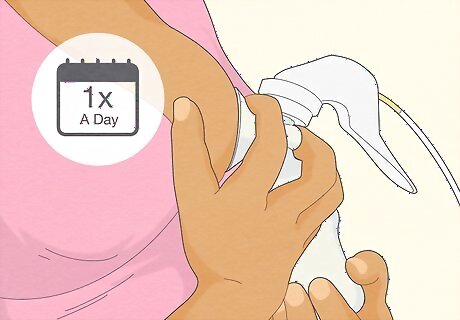
Power pump once a day. Whether you’re going back to work and would like to establish a frozen milk supply, you’re concerned you’re not producing enough milk or anything in between, power pumping is a wonderful option that helps increase your milk supply without much of a routine change. You can keep up your normal pumping schedule (around every 3 hours for 15-20 minutes), but switch out one of those pumping sessions for 1 hour of continuous power pumping. Make sure to consult with your pediatrician to ensure that your baby is properly nourished before assuming you need to power pump if you’re doing it to increase milk production rather than supply.

Power pump after feeding your baby. You can power pump whenever you’d like, though it’s recommended to do so after feeding your baby. The more comfortable you are, the easier it will be to pump, so if you feel most relaxed after you’ve fed and put your baby down for the night, try pumping then if it’s convenient for you. It’s best to power pump immediately after feeding your baby because you can empty your breasts of milk which prevents clogged milk ducts and makes the process easier on your body. If you don’t have time to power pump after feeding, wait till your baby’s next feeding time. Pumping can be exhausting, so listening to your body and stopping when needed is important. Consult with a lactation expert if you’re struggling to keep up with milk production or are experiencing discomfort—pumping shouldn’t hurt! Thinking about or looking at videos and pictures of your baby can make pumping easier! Keeping your sweet baby in your thoughts increases oxytocin, also known as the love hormone, which helps move milk through the milk ducts in the breast to the nipple.

Power pump in one-hour sessions. Power pumping in intervals starting with 20 minutes on, followed by 2 sessions of 10-minute rests and 10-minute pumps, stimulates your breasts to produce more milk. Your power pumping routine should look something like this: 20 minutes pumping 10-minute rest 10 minutes pumping 10-minute rest 10 minutes pumping
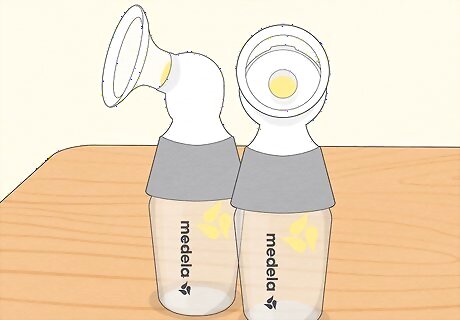
Use the pumping device that suits you best. Power pumping can be done using whatever pumping device you prefer, be it manual or electronic. The important thing here is that the pumping occurs in intervals over the course of 1 hour. Some people prefer to use double-breast pumps because it makes pumping much quicker, as single-breast pumps take double the time to use during a pumping session. Electric breast pumps often have multiple speed options. Alternating the breast pump frequency speed from “massage” to “milk removal” every 5 minutes during your pumping sessions may help to increase milk production due to the extra stimulation.
How long before I see results?
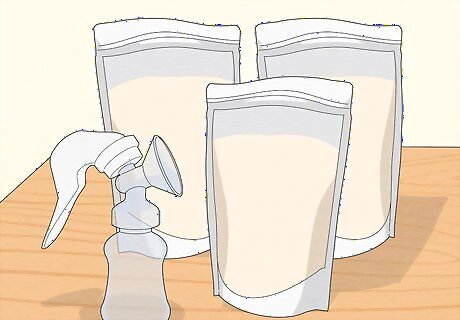
You should notice a small increase in milk supply after 4-5 days. After you begin power pumping once daily, you’ll likely notice a small increase in your ability to produce breast milk after the 4th or 5th consecutive day. Because breastfeeding is a supply-and-demand activity, your body will get the hint and start producing more milk as needed. As noted previously, using an electronic double-pumping machine makes the pumping process easier because it cuts your pumping time in half, and simulates both breasts at the same time, which can lead to an increase in milk production.
Ways to Increase Your Milk Supply

Put your baby on your chest for 20 minutes after feeding time. Resting your baby on your chest for 20 minutes after feeding for “kangaroo care” has been shown to increase milk supply. As a bonus, resting your baby on your chest for kangaroo care also helps you and your baby bond, regulates their temperature, and helps them to stop crying–it’s pretty incredible! Place your baby on their stomach on top of your chest. Let them curl up and get comfy, and cover their back with a blanket for warmth.

Allow your baby to feed as frequently and for as long as they’d like. Think of milk production as a supply and demand system. The more your baby feeds, the more milk you’ll produce. The ideal amount of daily feedings during the first weeks and months is around 8-12 feedings in 24 hours. Babies will feed for short sessions or long sessions throughout the day depending on what they need, so allow your baby to feed on demand—your baby will generally stop feeding when they’ve had their fill.

Take care of yourself by eating right and getting plenty of rest. The best way to care for your baby is to make sure you’re caring for yourself too. Being a new parent can feel overwhelming at times, so it’s critical that you maintain your relationship with your community, like family and friends, as well as eat nutritious foods like greens and protein, as well as drink plenty of water. Don’t be afraid to ask for help! If you’re not getting enough time to relax and nourish your body with the care it needs, let your partner, friends, or family know you could use an extra hand now and then. Sleep as much as you can. Being well-rested makes it much easier for your body to keep up with producing milk.
Storing Your Milk
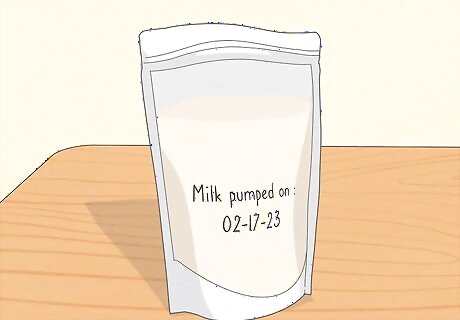
Label and store your fresh breast milk in glass or plastic containers. Protect your breast milk from spoiling by properly storing it in BPA-free plastic or glass food-grade containers with tight-fitting lids so that the milk stays totally sealed. Using a pen, label when your breast milk was expressed, so you can easily tell how long it’s good for. Be sure to avoid plastic with the number 7 at the bottom, as this could indicate that the plastic has BPAs and is unsafe for your baby. Never store milk in disposable bottle liners or other containers not meant for milk storage, like plastic baggies, as they aren’t secure and will lead to spoilage.
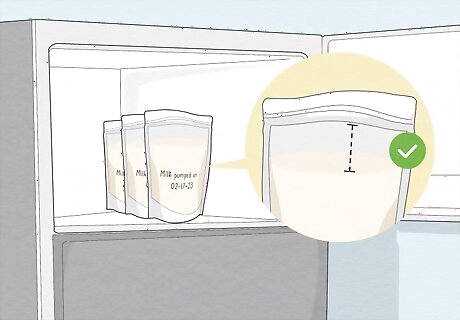
Store fresh breast milk in the refrigerator or freezer. Freshly pumped or expressed breast milk can be stored in the refrigerator at 40 degrees Fahrenheit (4 degrees Celcius) for up to 4 days or 6-12 months if kept in the freezer at 0 degrees Fahrenheit (-18 degrees Celcius). Don’t store your breast milk in the door of the refrigerator or freezer, as you want to keep the temperature of the milk as consistent as possible to avoid spoiling. Avoid wasting breast milk by storing 2-4 ounces (59-118 mL) at a time, and be sure to leave room at the top as breast milk expands.

If you have a surplus of breast milk, consider donating to a milk bank. Countless infants benefit from the donation of breast milk, especially in times of formula shortage. Donors go through a screening process, including bloodwork, before becoming eligible to donate, which should be comped by the milk bank program you’re working with. Most milk banks also provide storage and shipping containers to ensure your milk stays safe in the transportation process.


















Comments
0 comment